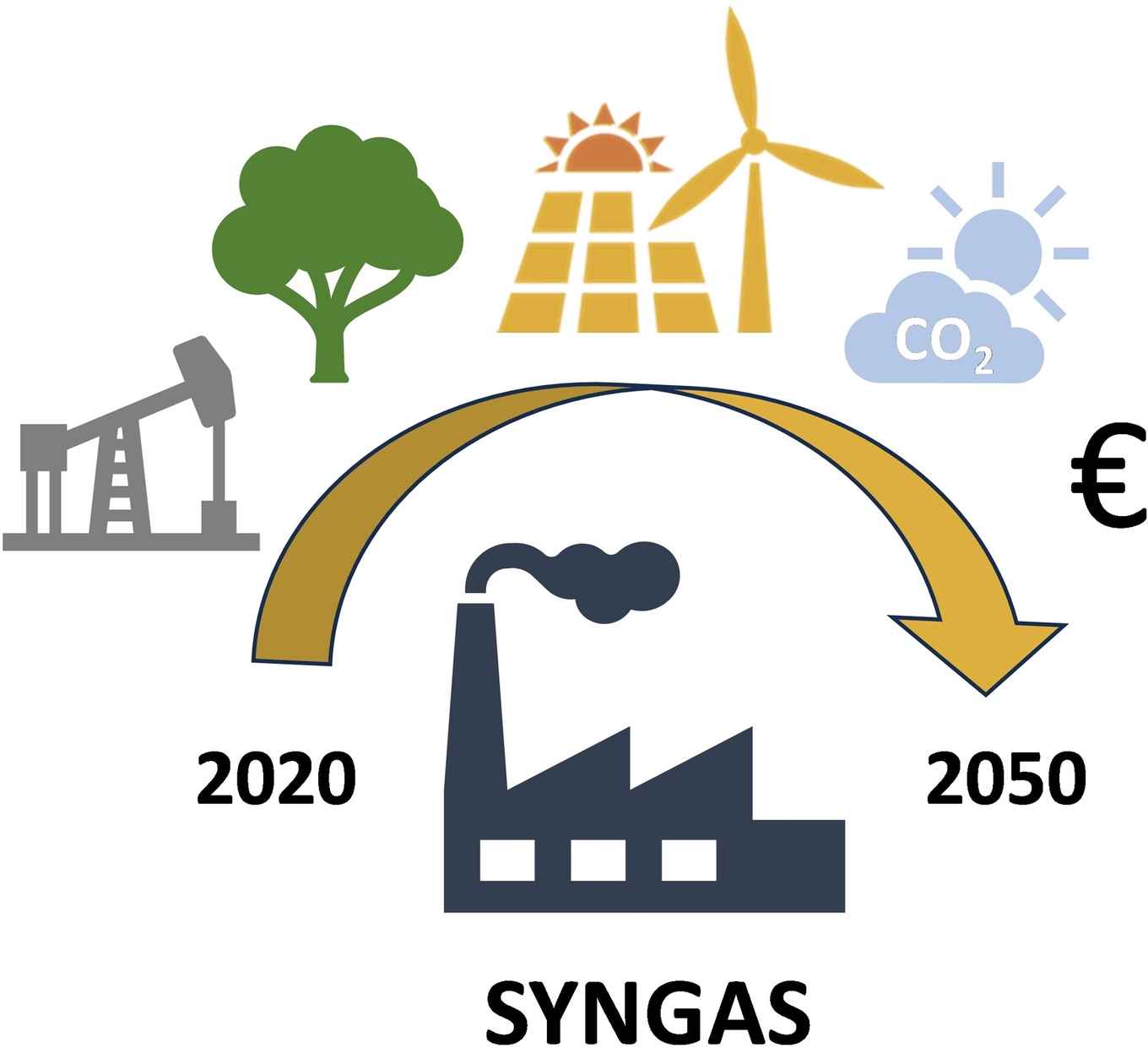How can renewable syngas become cost-competitive in 2050?
Substantial increase of carbon taxes and natural gas prices is needed, researchers calculate
25 April 2024

As a central chemical resource in a variety of industrial chemical plants, syngas is currently produced from fossil resources in well-established processes that are relatively efficient and low in costs. To render the chemical industry more sustainable, many initiatives are being developed that produce syngas using ‘circular carbon’ as a feedstock - for instance obtained from captured CO2 or from biogenic resources. Such renewable syngas production can only be a viable alternative if it can become cost-competitive with current fossil-based processes.
In their paper in ChemSusChem, Beerse, Detz, Van der Zwaan and co-workers at TNO investigate this for five approaches: Biomass Conversion; Plasma-Induced Conversion of CO2; Electrochemical Conversion of CO2 and Water; Light-Driven Conversion of CO2 and Hydrogen; and Solar Heat Conversion of CO2 and Water. They present a detailed techno-economic study showing that renewable syngas can become cost-competitive by 2050, at least under standard assumptions for the learning rates that may apply to components in the corresponding industrial processes. They calculate that this requires the price of natural gas to be at least around 3 €/GJ, and carbon taxes to increase from 90 €/tCO2 today to 300 €/tCO2 in 2050. The relative cost competitivity of the renewable production routes will likely depend on the steepness of the learning curves for the technologies involved as well as on the costs of feedstocks.
Paper details
Remko Detz, Marit Beerse, Nicole Meulendijks, Pascal Buskens, Bob van der Zwaan: Towards the Use of Renewable Syngas for the Decarbonization of Industry. ChemSusChem 2024, e202400059. DOI: 10.1002/cssc.202400059